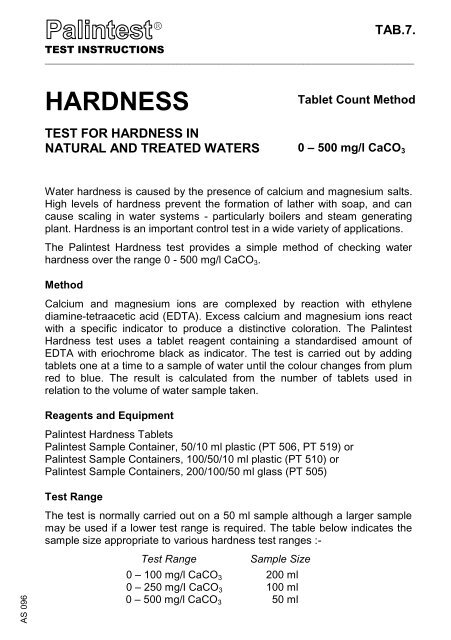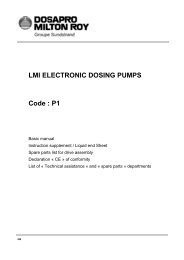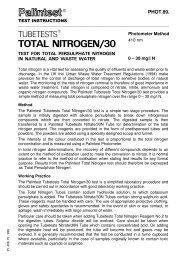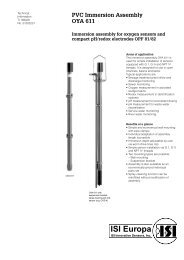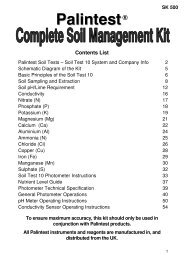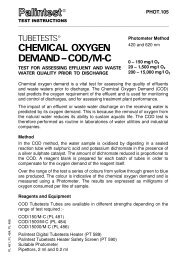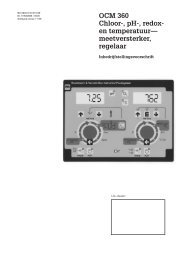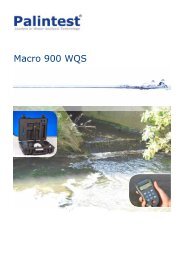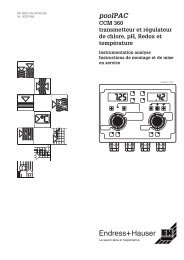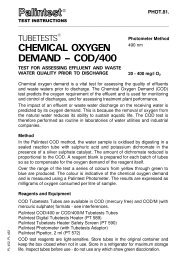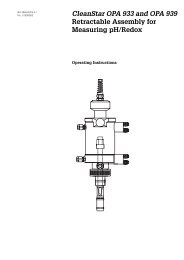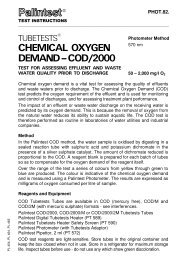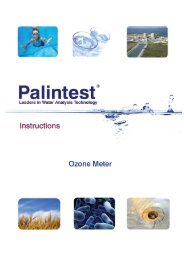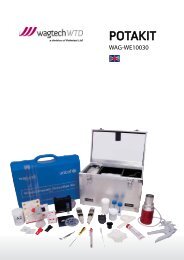You also want an ePaper? Increase the reach of your titles
YUMPU automatically turns print PDFs into web optimized ePapers that Google loves.
AS 096<br />
®<br />
TAB.7.<br />
TEST INSTRUCTIONS<br />
_______________________________________________________________________________________<br />
HARDNESS<br />
TEST FOR HARDNESS IN<br />
NATURAL AND TREATED WATERS<br />
Tablet Count Method<br />
0 – 500 mg/l CaCO 3<br />
Water <strong>hardness</strong> is caused by the presence of calcium and magnesium salts.<br />
High levels of <strong>hardness</strong> prevent the formation of lather with soap, and can<br />
cause scaling in water systems - particularly boilers and steam generating<br />
plant. Hardness is an important control test in a wide variety of applications.<br />
The Palintest Hardness test provides a simple method of checking water<br />
<strong>hardness</strong> over the range 0 - 500 mg/l CaCO 3 .<br />
Method<br />
Calcium and magnesium ions are complexed by reaction with ethylene<br />
diamine-tetraacetic acid (EDTA). Excess calcium and magnesium ions react<br />
with a specific indicator to produce a distinctive coloration. The Palintest<br />
Hardness test uses a tablet reagent containing a standardised amount of<br />
EDTA with eriochrome black as indicator. The test is carried out by adding<br />
tablets one at a time to a sample of water until the colour changes from plum<br />
red to blue. The result is calculated from the number of tablets used in<br />
relation to the volume of water sample taken.<br />
Reagents and Equipment<br />
Palintest Hardness Tablets<br />
Palintest Sample Container, 50/10 ml plastic (PT 506, PT 519) or<br />
Palintest Sample Containers, 100/50/10 ml plastic (PT 510) or<br />
Palintest Sample Containers, 200/100/50 ml glass (PT 505)<br />
Test Range<br />
The test is normally carried out on a 50 ml sample although a larger sample<br />
may be used if a lower test range is required. The table below indicates the<br />
sample size appropriate to various <strong>hardness</strong> test ranges :-<br />
Test Range<br />
Sample Size<br />
0 – 100 mg/l CaCO 3 200 ml<br />
0 – 250 mg/I CaCO 3 100 ml<br />
0 – 500 mg/l CaCO 3 50 ml
Test Procedure<br />
1 Select the sample size appropriate to the <strong>hardness</strong> range under test. Take<br />
a sample of the correct size in the Palintest sample container.<br />
2 Add one Hardness tablet and shake the container until the tablet<br />
disintegrates.<br />
3 Continue adding tablets one at a time in this manner until the colour of the<br />
solution changes from plum red to blue.<br />
4 Note the number of tablets used and calculate the result from the formula<br />
below appropriate to the sample volume taken :-<br />
Notes<br />
Sample Size Calculation - Hardness (mg/1 CaCO 3 )<br />
200 ml = (No of Tablets x 10) - 5<br />
100 ml = (No of Tablets x 20) - 10<br />
50 ml = (No of Tablets x 40) - 20<br />
1 The expression of <strong>hardness</strong> results sometimes causes confusion. It is<br />
normal practice to express the result of <strong>hardness</strong> tests as mg/l CaCO 3<br />
(calcium carbonate). This is merely a convention to allow the comparison<br />
of different results and does not necessarily indicate that the <strong>hardness</strong> is<br />
present in the water in this form.<br />
2 This test measures total <strong>hardness</strong>, ie the total content of calcium and<br />
magnesium ions in the water. For the specific measurement of calcium<br />
<strong>hardness</strong> and magnesium <strong>hardness</strong>, refer to the Palintest Calcium<br />
Hardness Test.<br />
3 For the measurement of low levels of <strong>hardness</strong> in softened waters, use<br />
the Palintest Hardness LR or Palintest Hardness VLR tests.<br />
___________________________<br />
V1-12/03


